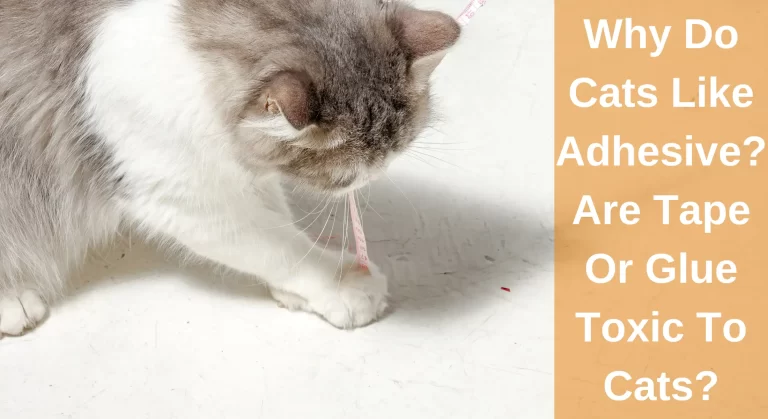Why Cat Peeing Over Edge of Litter Box? Top 10 Reasons And Solutions
Usually, cats have certain potty habits; If they are bothered in any way, it may irritate them and create a mess for you to clean. An unhappy feline can exhibit a variety of negative behaviours, one of which can be quite perplexing.
Your cat peeing over edge of litter box might be caused by a number of factors. They might have health difficulties (urinary tract infection, diabetes or chronic kidney disease,), you could start cleaning it more frequently, or your cat could simply be picky and decide it doesn’t like its litter box. Finding out why your cat pees over the side of the litter box are critical to breaking this habit.

Top 10 Reasons Why is My Cat Peeing Over Edge of Litter Box
1. Your Cat’s Litter Box is Filthy
Typically, the litter box’s concern is cleanliness. Cats are clean animals who spend most of their time grooming themselves. As a result, when it comes to litter box use, cats prefer a clean tray and will always go for an uncontaminated place to urinate on.
If your litter box is clogged with disgusting urine clots, your cat will meow and have a difficult time finding a clean spot. They could even refuse to use the litter box at all.
Also Read: Why Do Cats Scratch The Sides Of The Litter Box?
2. Cat’s Litter Box is Little
Because the litter box is too tiny for your cat, it is most likely peeing over the side. If your cat can’t find space to sit inside the litter box, its behind will almost surely be hanging over the edge when it goes to the bathroom.
3. Spraying
A type of urine marking known as spraying is used by cats to communicate, and it occurs when cats urinate on vertical surfaces. It’s also conceivable that the pee you find outside your cat’s litter box isn’t from them completely releasing themselves outside the tray, but rather from them spraying. So, if your cat sprays outside the litter box, it’s a communication issue, not a litter box problem.
4. Stress
Other circumstances in your cat’s life might be influencing its new toilet habits. If you’ve just made changes or they’ve just moved in, they can be more concerned and less interested in their restroom habits than normal.
5. Your Cat is Suffering from Arthritis
Because it causes them additional discomfort, arthritic cats frequently pee over the edge of their dish. They must first climb into a litter box, which many have high access points. Then they have to move about and risk hitting their inflamed joints on the box’s sides, exacerbating the discomfort.
6. Medical Concerns
Diabetes and hyperthyroidism, for example, might cause an increase in urine output, requiring your cat to go more frequently. This sudden impulse to urinate explains why they pee outside their litter box rather than within.
7. Your Cat has a Urinary Problem
Most probably, your cat might possibly be suffering from a variety of urinary problems. The following are examples of common feline urinary problems:
- Cystitis: Also known as bladder inflammation, cystitis can cause frequent and painful urination. There is frequently no underlying aetiology, indicating that the inflammation is idiopathic.
- Urinary Tract Infection(UTI): Bacteria can enter and migrate up the urinary system in elderly cats, causing infection and irritation.
8. Cat’s Paw has been Harmed
Because their paws have been hurt; cats are not peeing in litter boxes. There are several forms of paw pad injuries observed often in cats:
- Claws that have grown too long can curve back and grow into a cat’s paw pads, puncturing the surface. This is more frequent in indoor cats, who are less active than young, outside felines and spend less time filing down their claws.
- If your cat was recently involved in a fight, the other cat may have bitten its paw, causing an open wound.
9. Cat Might have Trodden on Something Sharp
Your cat may have stepped on something sharp, such as a shard of glass, a thorny plant or a jagged stone. Shallow cuts will not create severe problems, but extensively sliced paw pads can be uncomfortable.
10. Cat Dislikes its Litter
It’s also conceivable that your cat dislikes their kitty litter. If this is the case, they may be balancing on the box’s edge to avoid contacting the cat litter with their paws, and their pee will most likely flow outside the tray.
If this is the case, and you are certain that your litter box is large enough, the cause is generally the sort of litter.
Check Out: Can Cats Find Their Litter Box If You Move It?
7 Ways To Prevent Your Cat Peeing Over the Edge of the Litter Box

1. Ensure that they have Their Own Litter Box
A cat’s litter box is one of his or her most private spaces. If they have to share it with another cat or animal, they will most likely mark it on a frequent basis to warn the other cat that they need to move somewhere else.
2. Purchase a Larger-Sized Box for Them
If there isn’t enough room, they won’t be able to squat properly and will have to squeeze themselves into pee over the edge. It is simple to experiment with a bigger litter box.
3. Purchase a Box With Taller Sides
Getting a box with higher sides is one of the more obvious choices. If your cat can’t sit on the litter, offer them a box with high enough sides to accommodate their toilet needs.
4. Cover the Top of the Box With a Cloth
Another alternative is to acquire a litter box with complete sides that lead up to a cover. You may buy them at pet stores or create your own out of a plastic storage container; no matter how high they pee, it will never overflow.
However, if your cat begins to pee beyond the container litter box’s door, it may be time to try something different. Make a hole at the top of the box with the plastic tube so they will have to crawl down into it to use it.
5. Repair Any Recent Litter Box Modifications
If you have a new box, try to pick one that is more similar to the form and size of the prior one. Your partly colourblind cat is unconcerned about appearances. They are simply concerned about usefulness.
6. Take Them to the Veterinarian
If they are unwell, it is often not the choice you want to consider last. Take them to the veterinarian for a short examination and inform them about the recent behaviour change.
This is especially important as they age because many harmful illnesses are more likely to appear as the animal ages.
7. Install Floor Mats
You may also surround the cat’s litter box with floor mats. This should only be used as a last option.
Check Out: How To Stop A Cat From Peeing On Clothes?
Frequently Asked Questions
The Bottom Line On Cat Peeing Over Edge of Litter Box
Finally, there are several explanations for why your cat peed over the litter box’s edge. If their behaviour is caused by a medical ailment, your veterinarian may be able to provide medication to halt the unpleasant behaviour.
There are also a variety of items available at pet retailers to assist decrease the mess your cat generates and make the occasional accident simpler to clean up.
Who is Isabella?
My name is Isabella, and I am a dedicated and knowledgeable cat enthusiast. With years of experience caring for cats and a deep love for felines, I made a mission to help other cat lovers navigate the challenges of cat ownership.






